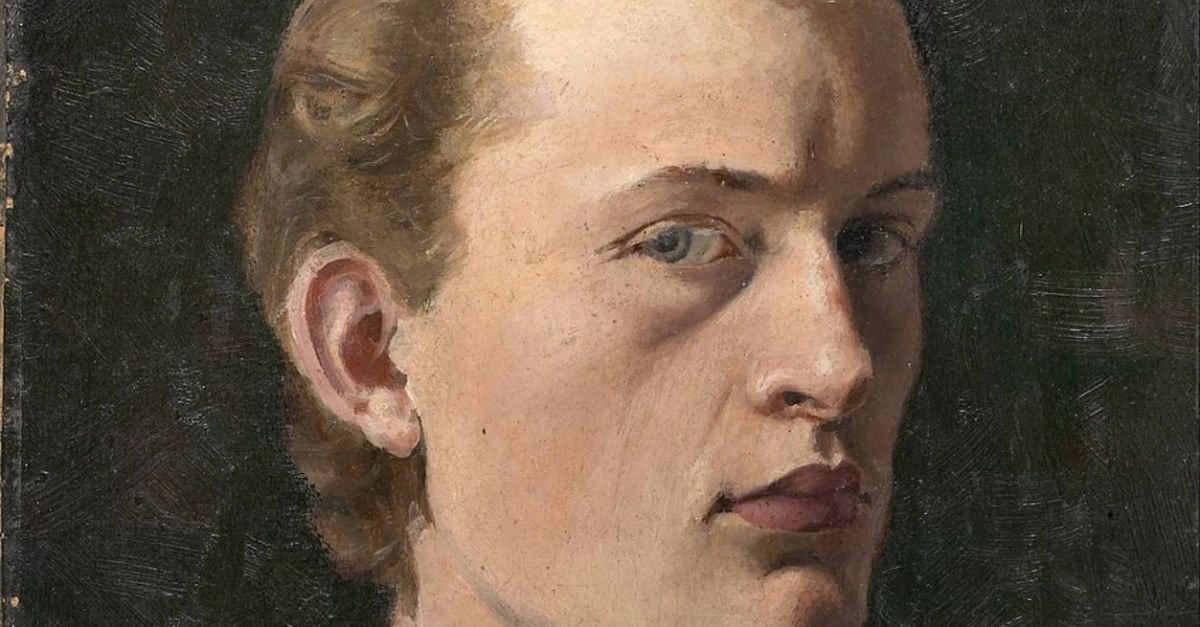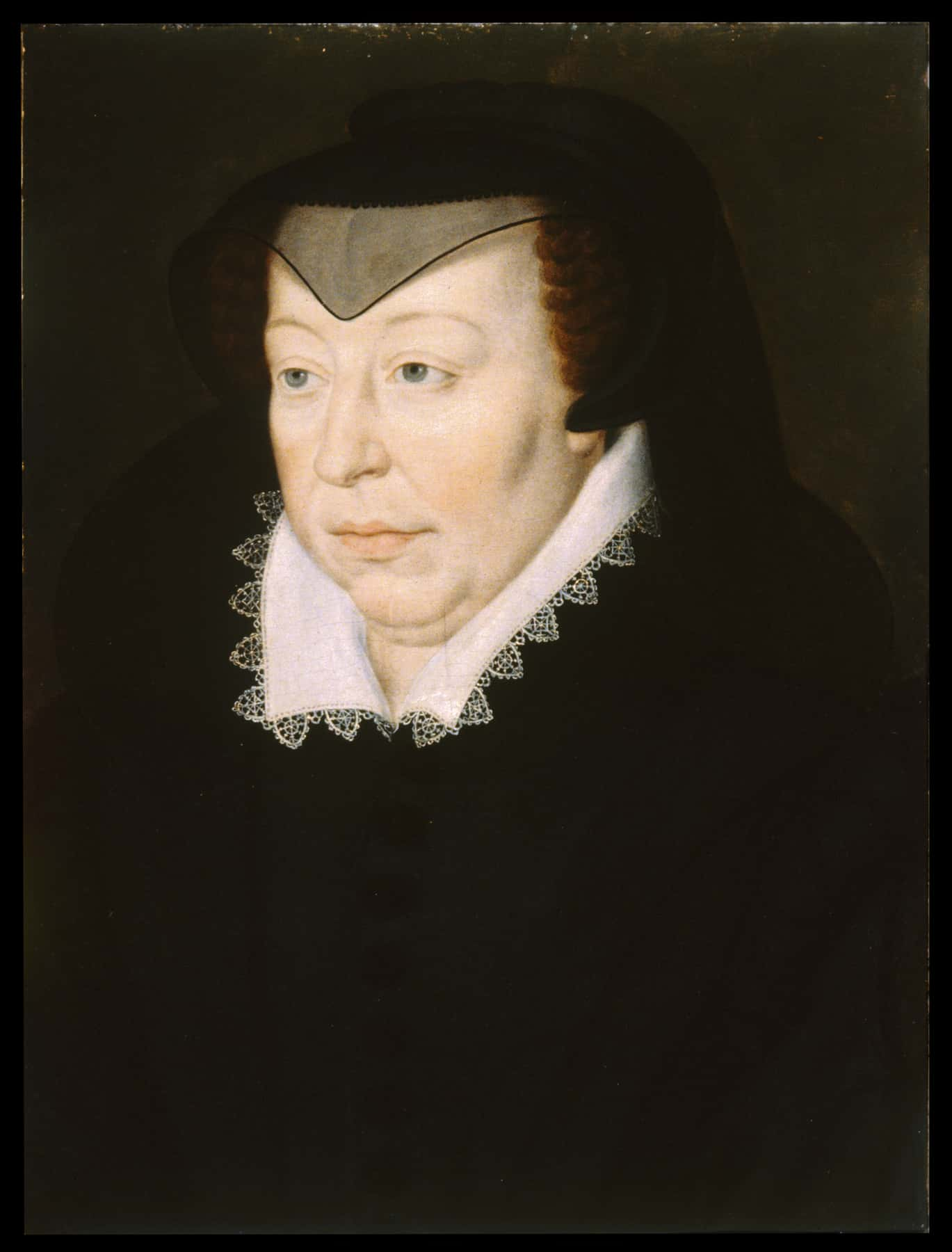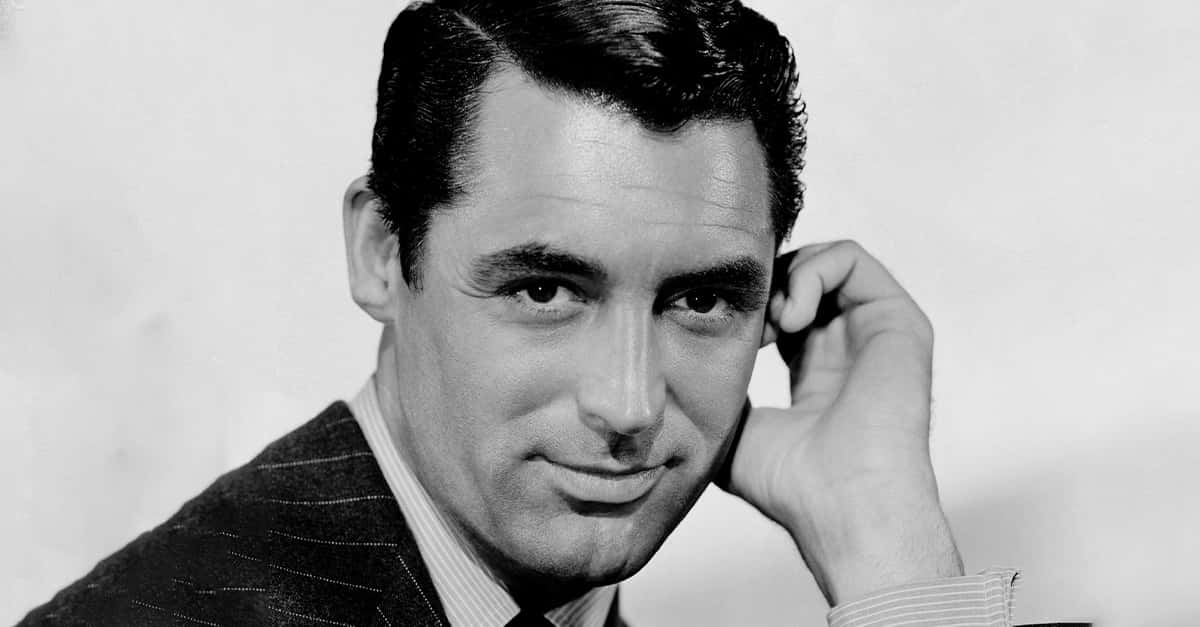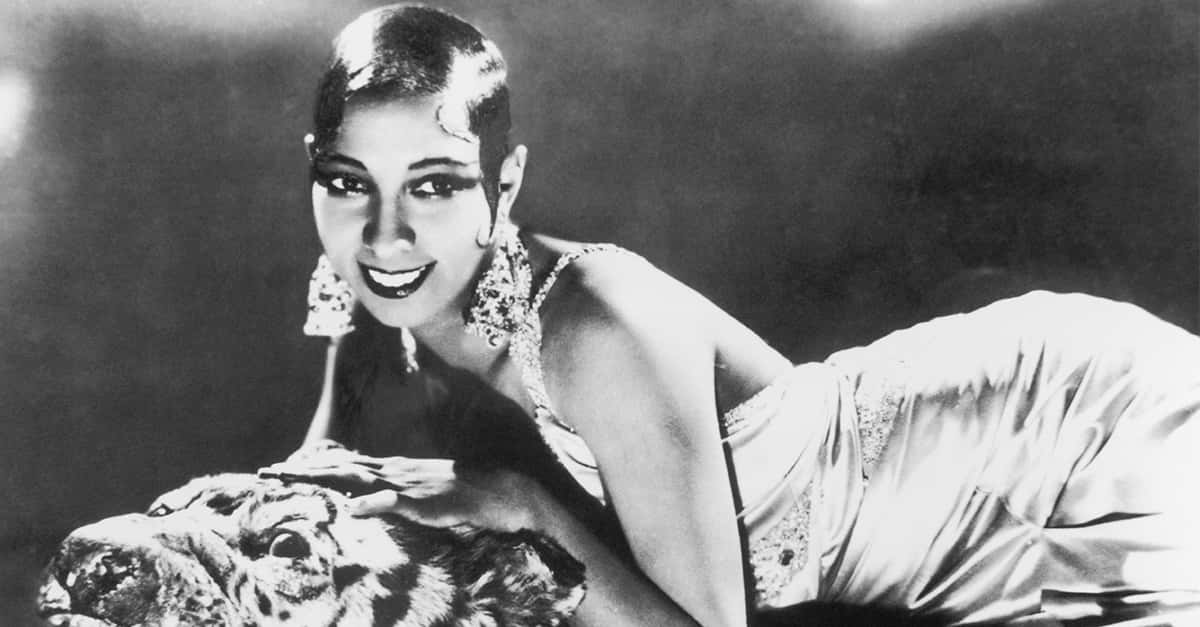The Stories Behind The Paintings
In a sea of over a thousand works, Edvard Munch carved out scenes of longing, sorrow, and desire—each a silent poem was painted with light and shadow.
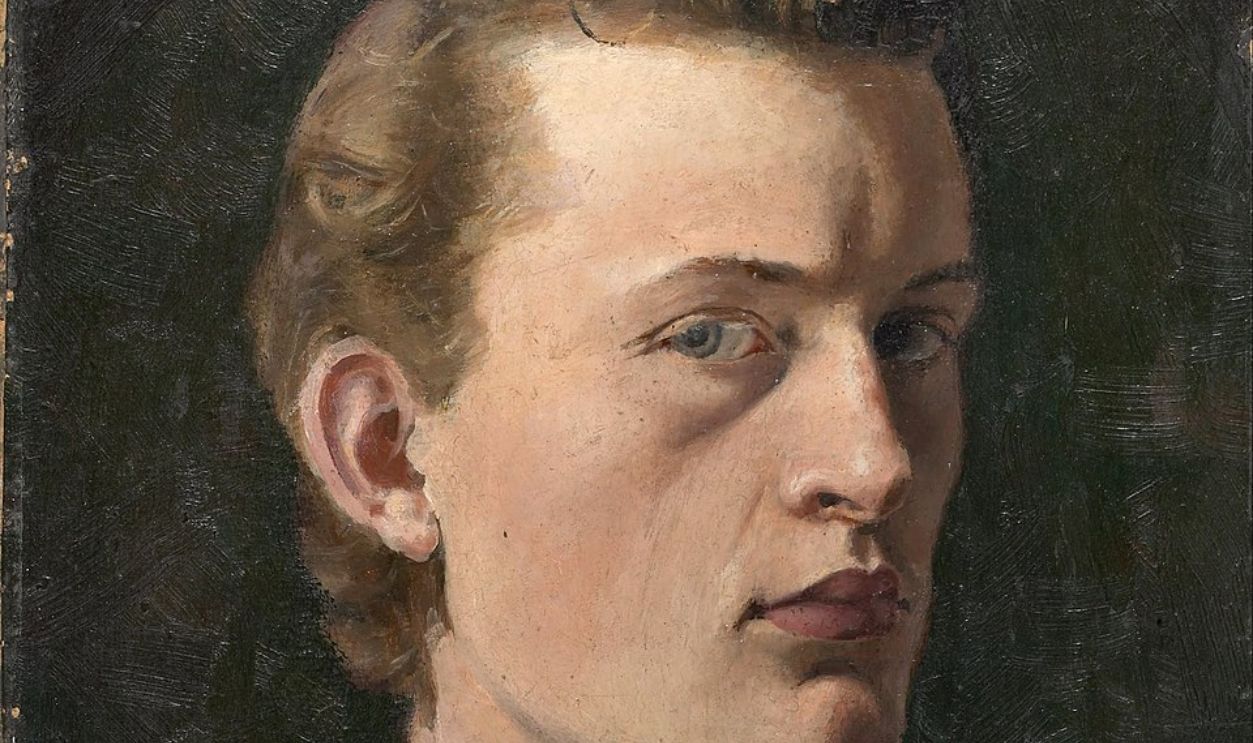
“The Scream” (1893)
Imagine feeling nature itself screaming around you—that’s exactly what Munch painted here. This iconic image captures raw anxiety, with its swirling sky and agonized figure symbolizing a universal, visceral moment of existential dread. Can you sense the panic?
 Edvard Munch, Public domain, Wikimedia Commons
Edvard Munch, Public domain, Wikimedia Commons
“Madonna” (1894–1895)
Love and passing dance hauntingly in this work, created when Munch was in his early thirties. The seductive yet ethereal lady personifies both desire and fatal attraction, reflecting Munch’s complex relationships. The painting’s haunting beauty welcomes you to confront your issues with failed passion.
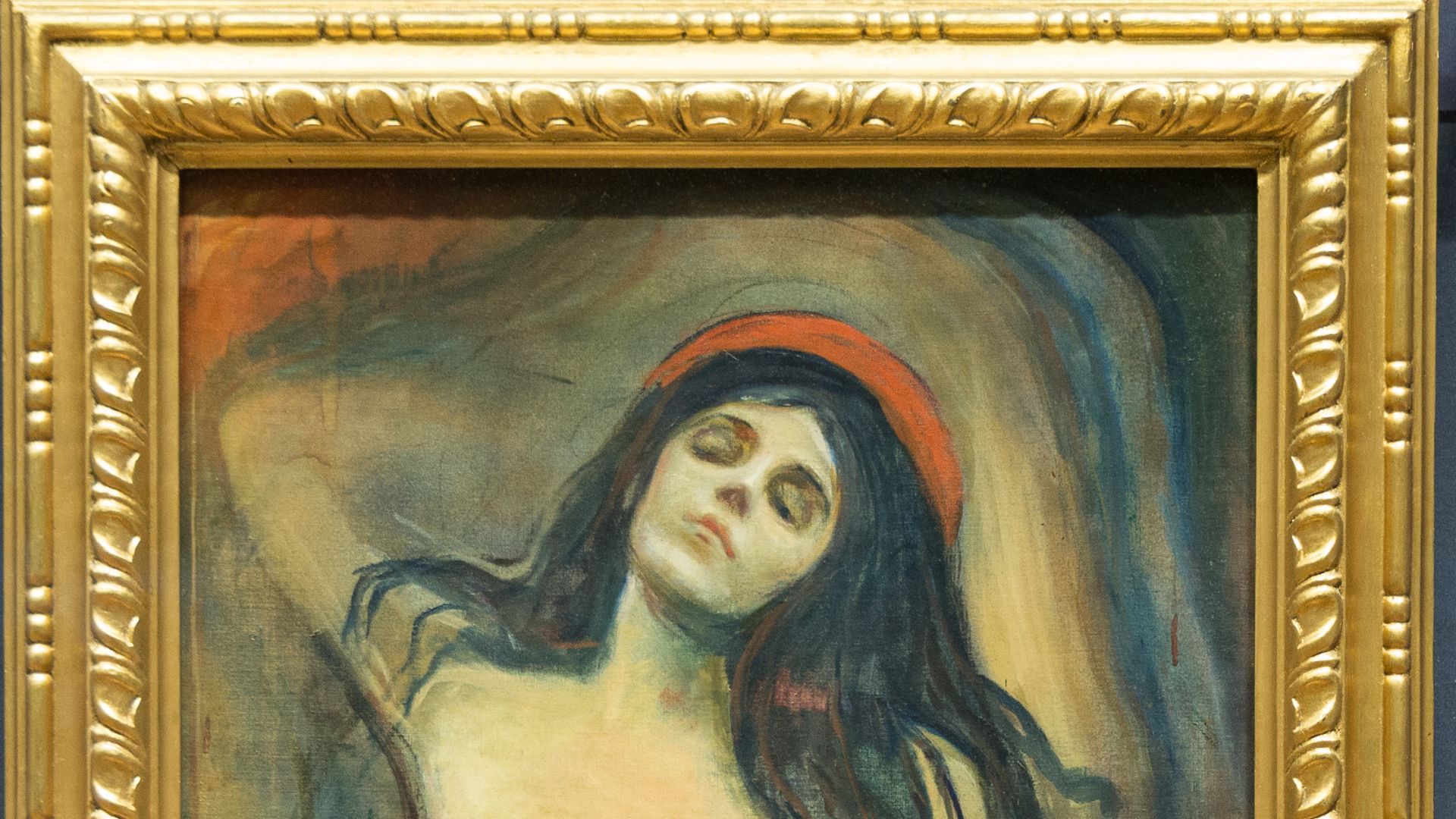 Øyvind Holmstad, Wikimedia Commons
Øyvind Holmstad, Wikimedia Commons
“The Dance Of Life” (1899–1900)
This piece shows love’s bloom and withers in one sweeping dance. The three female figures in the foreground symbolize youth, maturity, and old age, and this reminds you how fleeting romantic bliss can be. Such a painting invites reflection on your own journey through love and time.
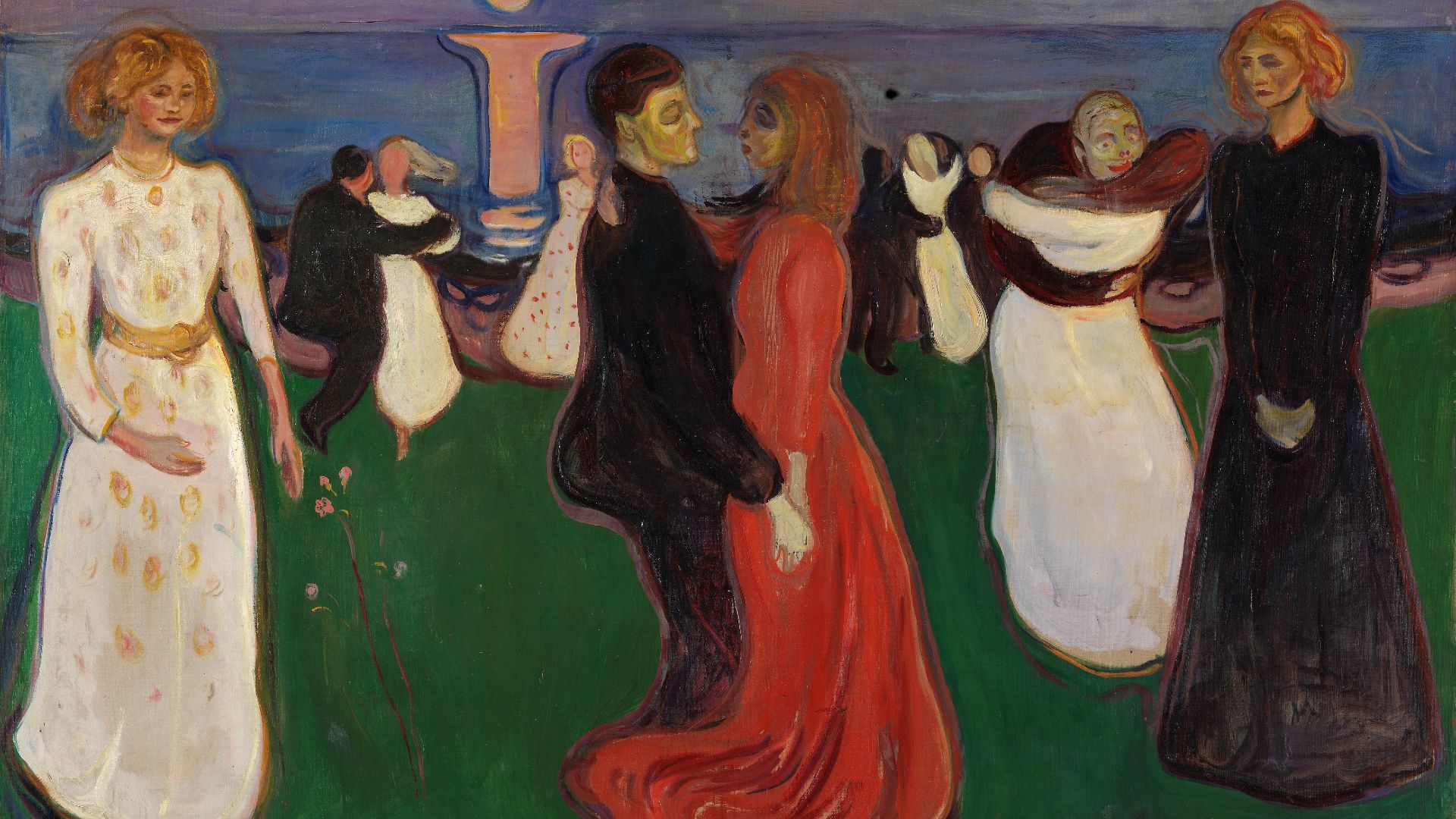 Edvard Munch, Wikimedia Commons
Edvard Munch, Wikimedia Commons
“The Sick Child” (1885–1886)
Tragedy strikes early here. This Munch piece was part of six executed over 40 years. Here, he immortalized his sister Sophie’s passing from tuberculosis. The hazy brushwork evokes the fading life and the weight of grief. Looking closely, you feel how loss permeated Munch’s psyche.
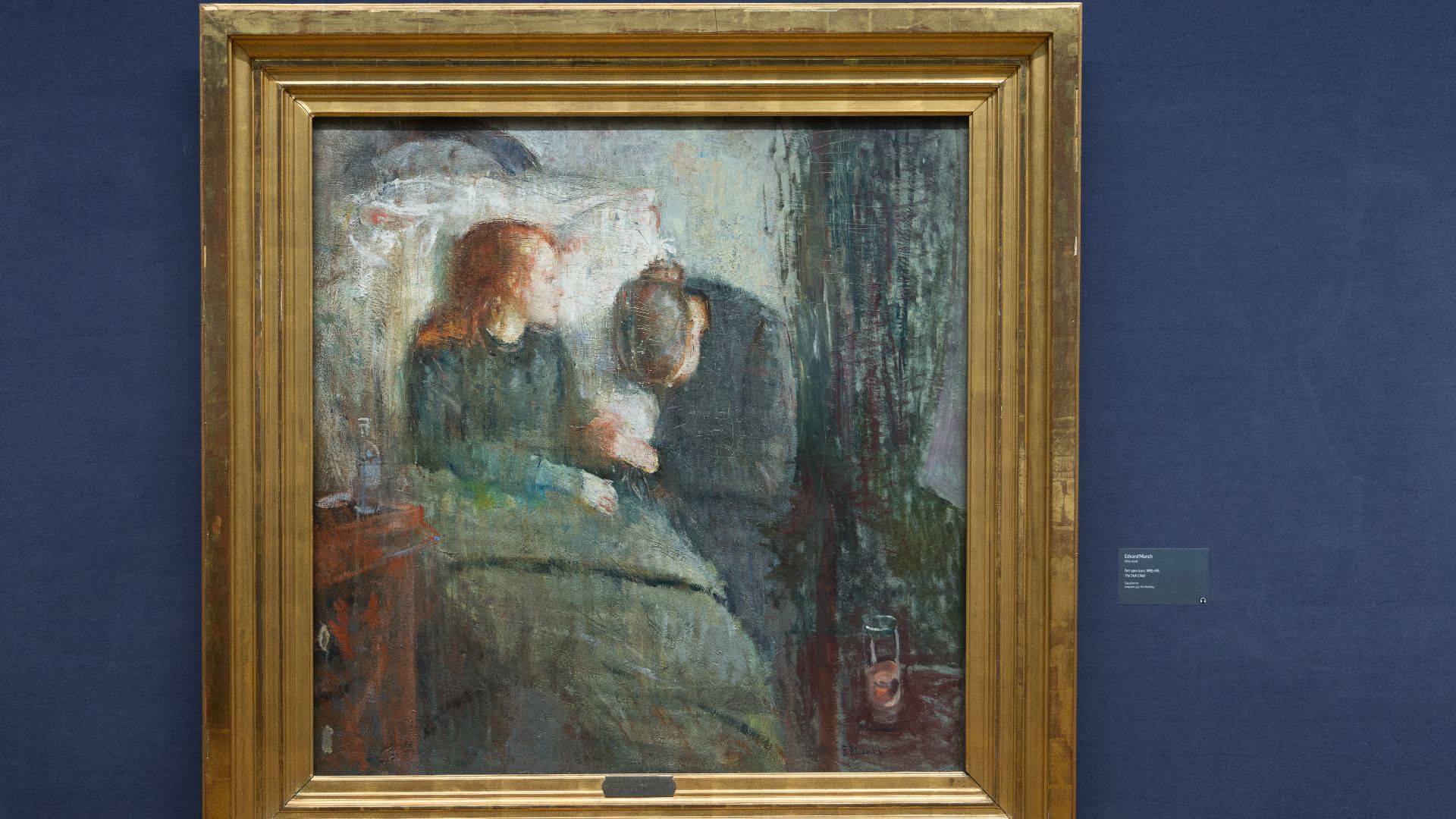 Øyvind Holmstad, Wikimedia Commons
Øyvind Holmstad, Wikimedia Commons
“Vampire/ Love And Pain” (1993–1895)
Who’s the predator here? Munch painted this eerie embrace between a woman and a man in 1893-1895, laden with heartbreak and emotional exhaustion. The woman’s red hair spreads and almost seems to bleed on the man. It asks: Have you ever felt love’s painful grip?
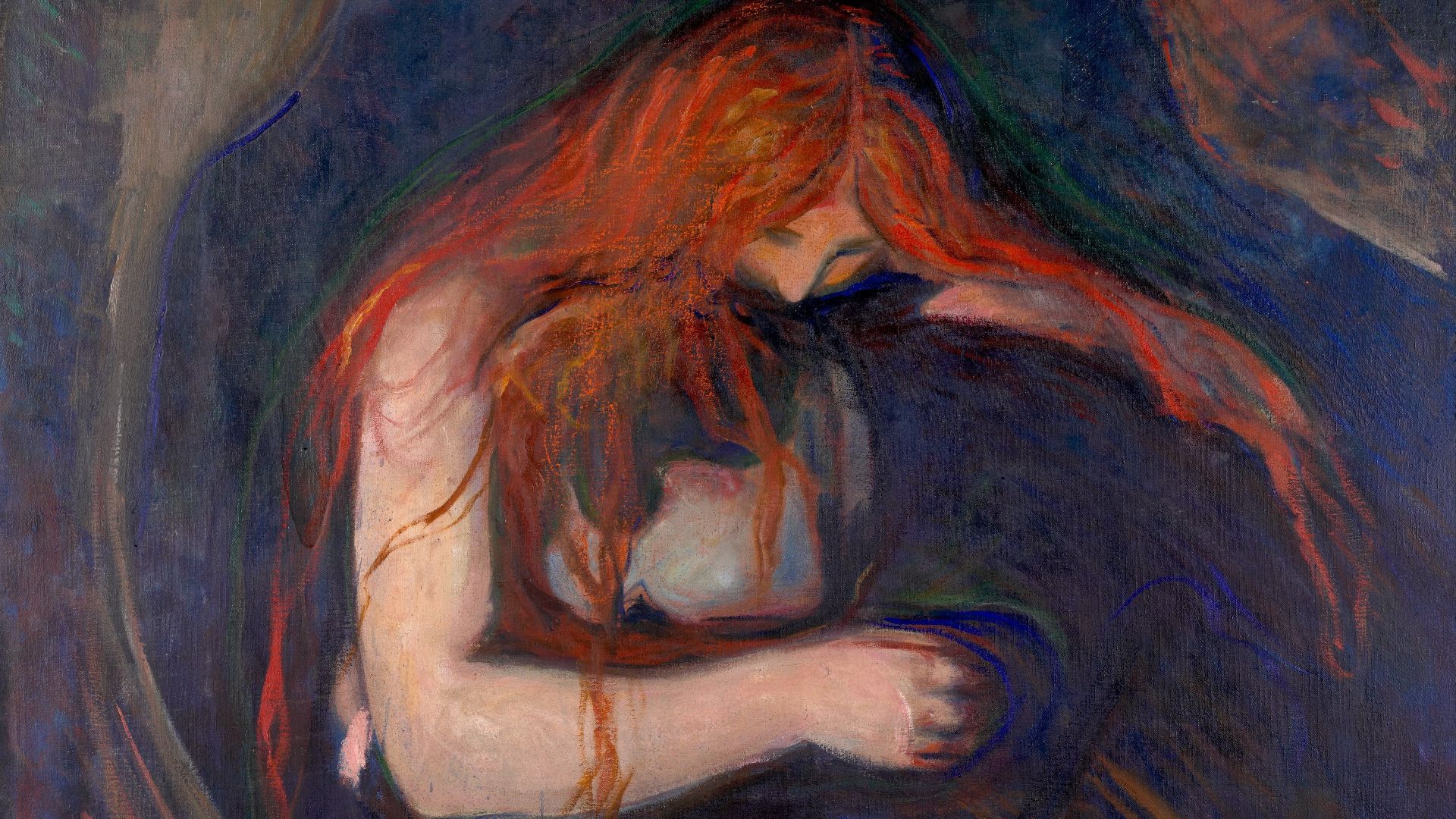 Edvard Munch, Wikimedia Commons
Edvard Munch, Wikimedia Commons
“Ashes” (1894)
This painting reveals the aftermath of passion gone wrong. Munch here channels emotional devastation into this somber scene, where a couple’s silence speaks volumes. The guy seems ashamed, bending over and holding his head. The lady holds her head with a face of despair.
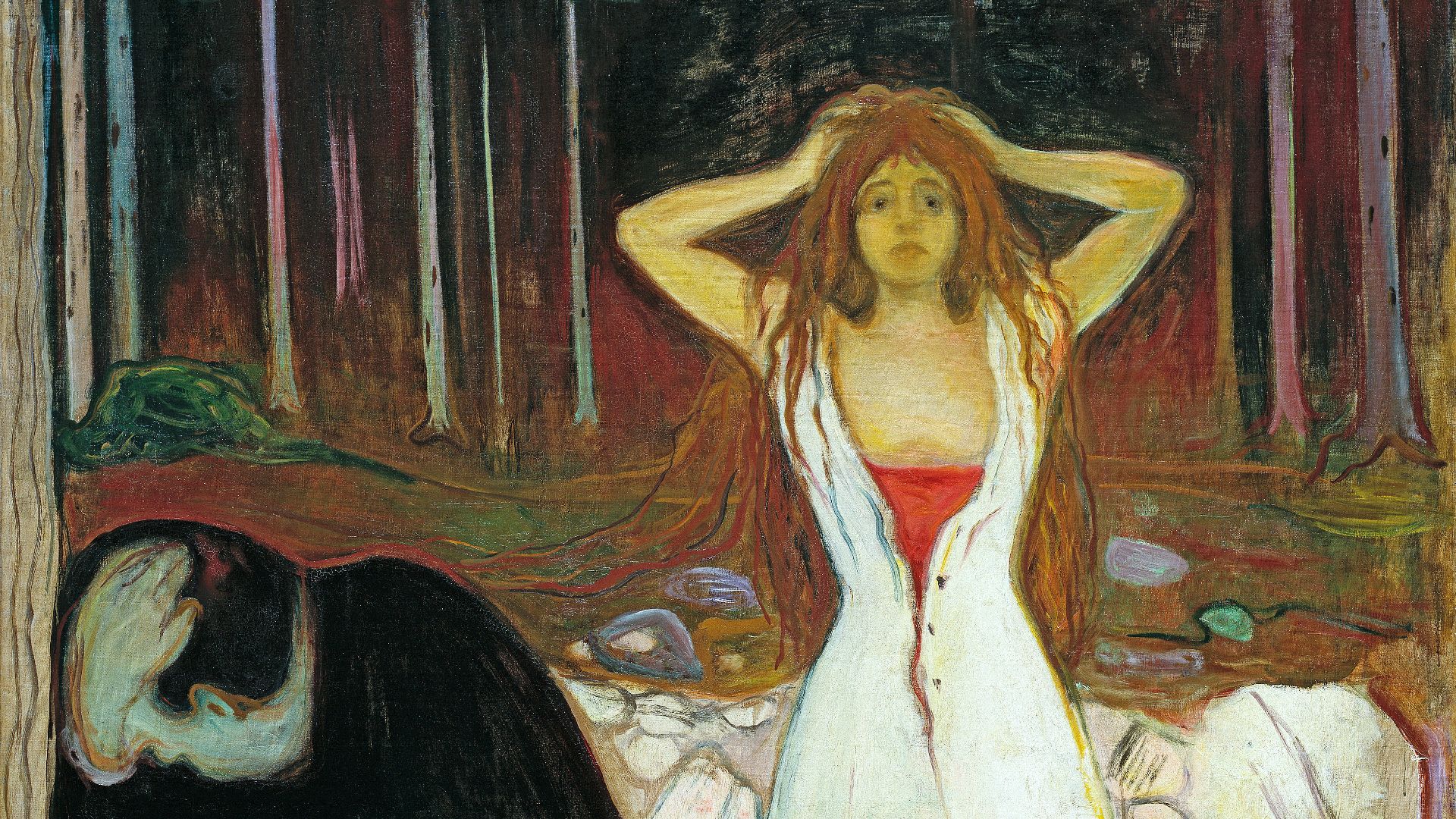 Edvard Munch, Wikimedia Commons
Edvard Munch, Wikimedia Commons
“Self-Portrait With Burning Cigarette” (1895)
An introspective glimpse, this self-portrait shows Munch grappling with isolation and self-doubt. The burning cigarette adds a rebellious edge, hinting at his struggle with inner demons. It challenges you to think about how artists reveal their vulnerabilities through their work.
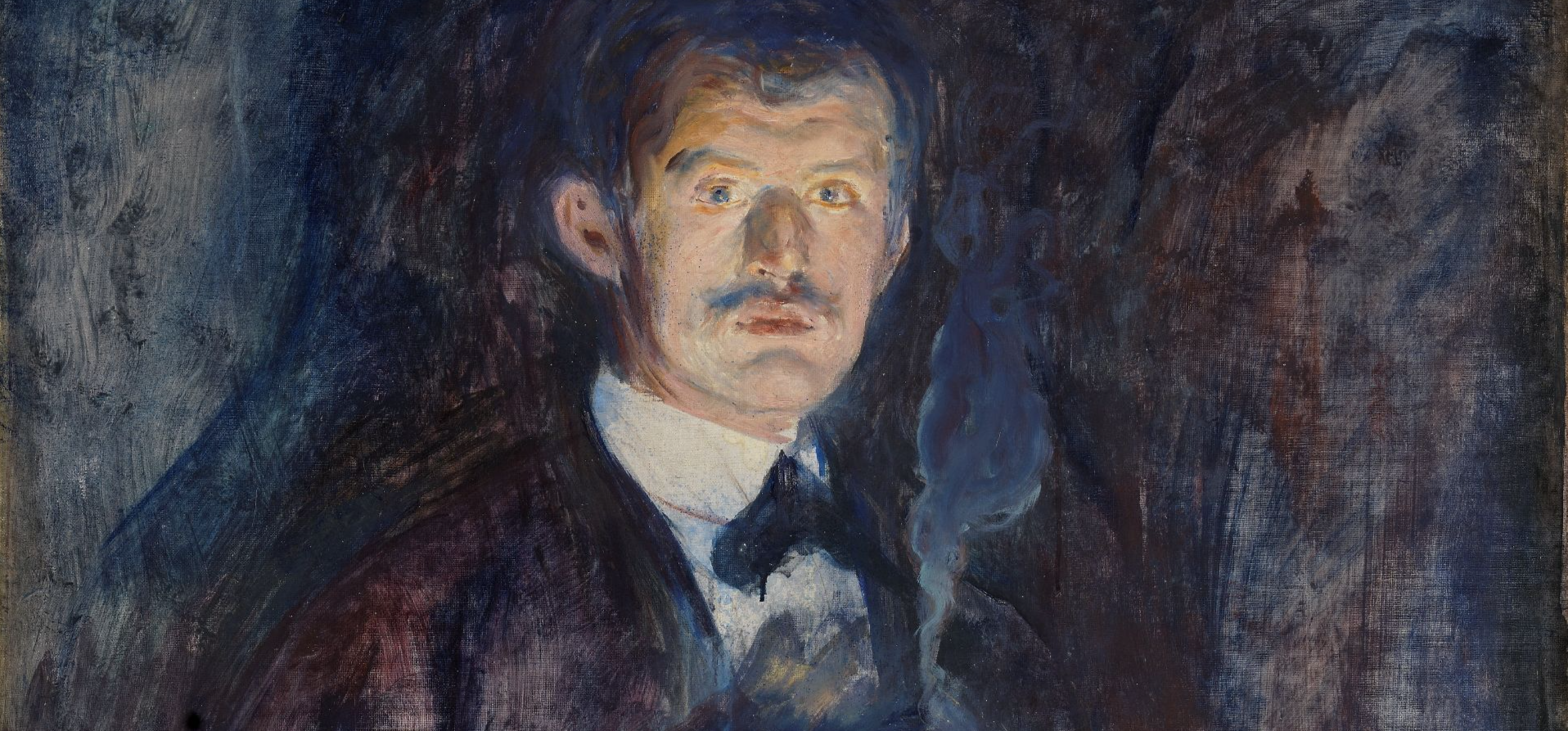 Edvard Munch, Wikimedia Commons
Edvard Munch, Wikimedia Commons
“The Girls On The Bridge” (1901)
Munch captured this melancholic yet serene moment. The three girls stand poised between youth and uncertainty, bathed in soft light. The painting feels like a snapshot of fleeting innocence—can you recall a moment when time seemed to pause like this?
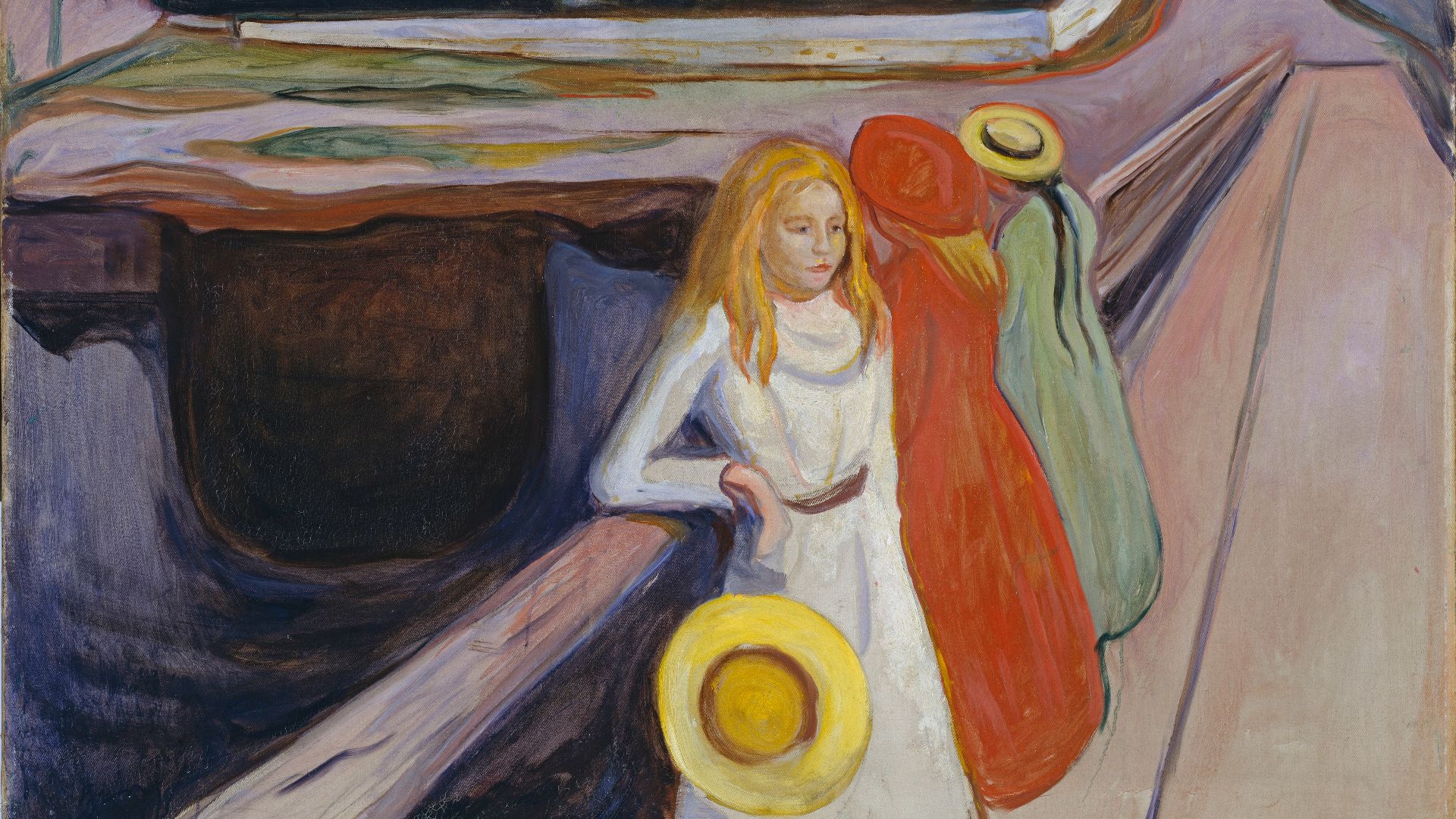 Edvard Munch, Wikimedia Commons
Edvard Munch, Wikimedia Commons

History's most fascinating stories and darkest secrets, delivered to your inbox daily.
“Melancholy” (1891)
Here, Munch painted a lone figure absorbed in deep thought, reflecting personal loss and existential unease. The heavy atmosphere draws you into a silent dialogue with your own moods. It’s more than a portrait; it’s an invitation to confront sadness as part of life’s fabric.
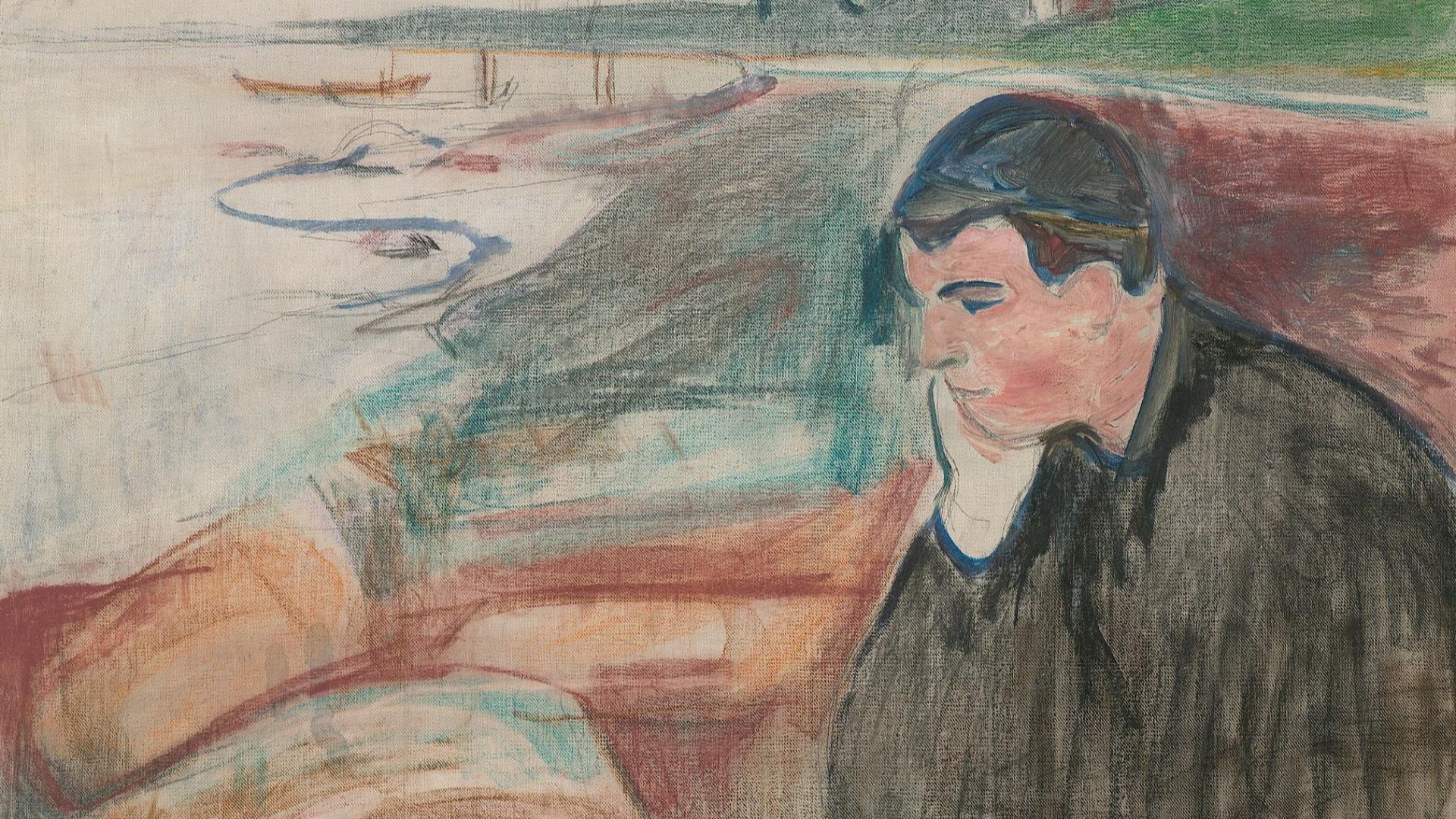 Edvard Munch, Wikimedia Commons
Edvard Munch, Wikimedia Commons
“Beach In Asgardstrand” (1904)
This peaceful shoreline glistens under gentle sunlight to display Munch’s love for Norway’s natural beauty. Asgardstrand was a place he returned to often, and this painting reflects the calm connection between land, sea, and sky that soothed his restless spirit.
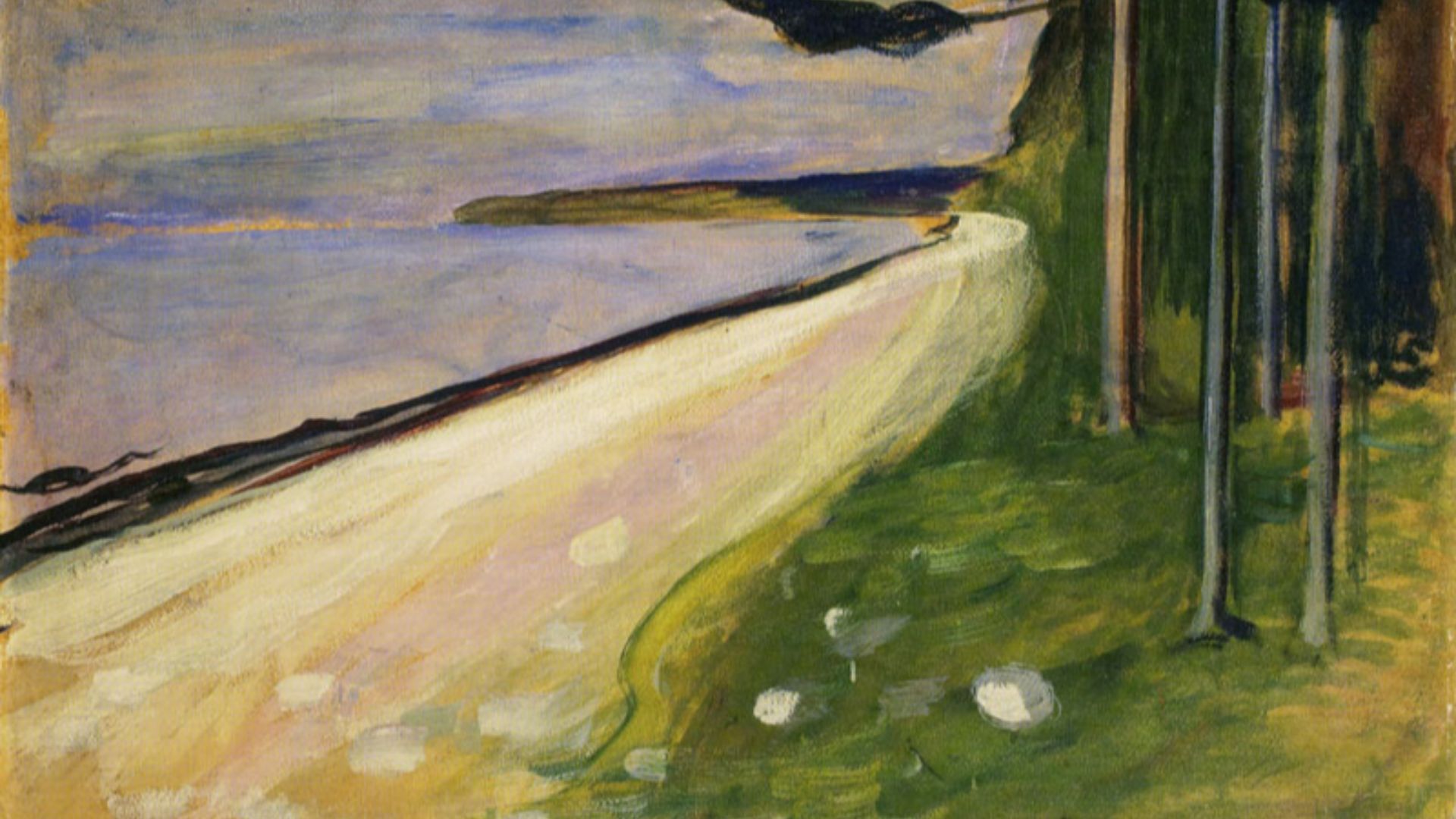 Edvard Munch, Wikimedia Commons
Edvard Munch, Wikimedia Commons
“Winter Landscape With House And Red Sky (1881)
You can hear the silence and chill just by looking at this one. A snow-covered field contrasts sharply with a fiery red sky as if the cold and heat battle for attention. This work is Munch inviting you to feel the tension between nature’s calm and fury.
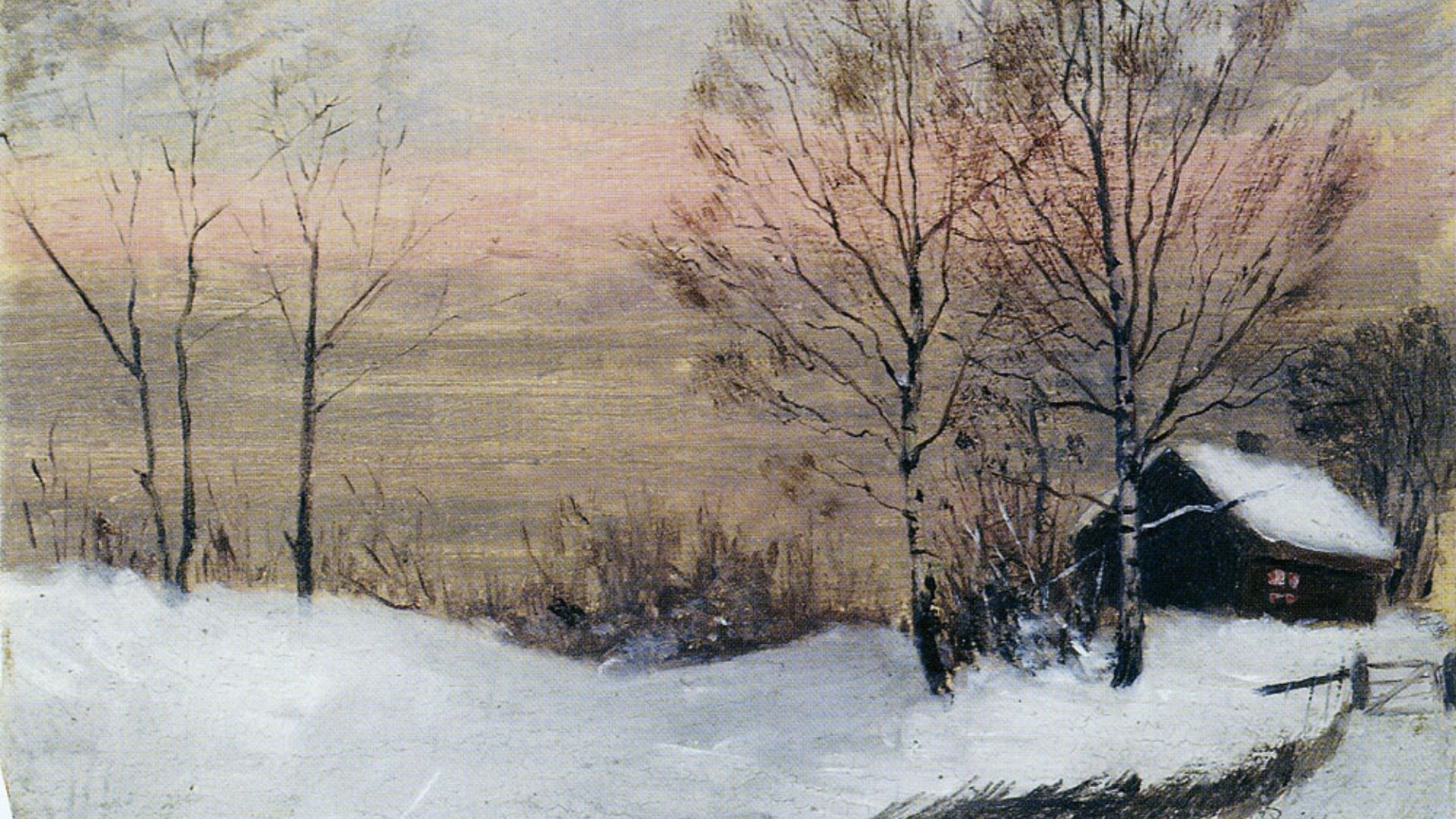 Edvard Munch, Wikimedia Commons
Edvard Munch, Wikimedia Commons
“The Voice” (1893)
Listen closely: this haunting portrait captures Munch’s cousin Millie Thaulow at the start of their secret affair. Painted from memory, it reveals her conflicted awakening to desire, resisting yet drawn in. Notice the dark circles around her eyes and the moonlight’s phallic reflection, symbolizing their unconsummated passion.
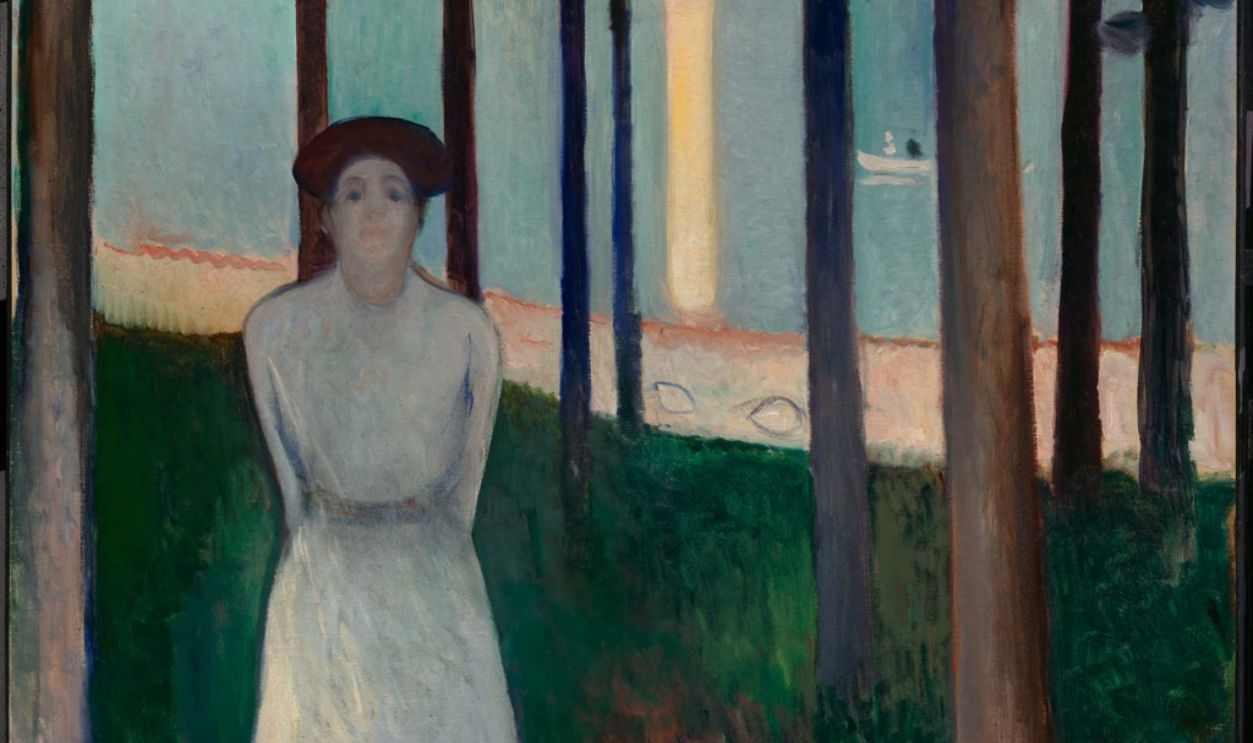 Edvard Munch, Public domain, Wikimedia Commons
Edvard Munch, Public domain, Wikimedia Commons
“The Sun” (1910–1913)
A burst of optimism shines through this late work. Munch here embraced brighter themes, and here, the sun blazes with warm vitality. This painting reminds you that even the darkest artists find light, sometimes in the simplest elements of nature.
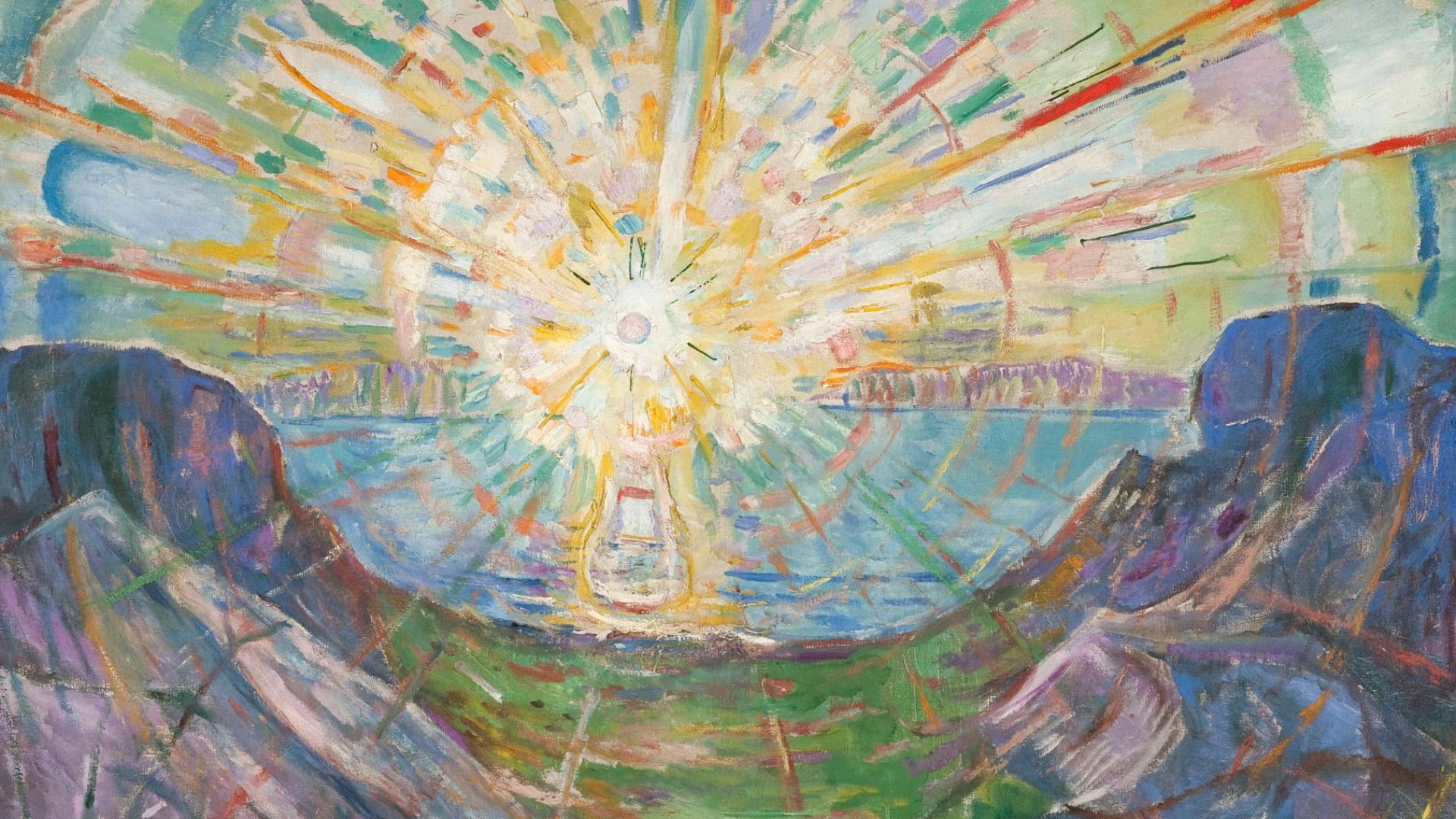 Edvard Munch, Wikimedia Commons
Edvard Munch, Wikimedia Commons
“The Storm” (1893)
Storm clouds aren’t just a sign of weather; they symbolize emotional turbulence here. The artist is inspired by Norway’s dramatic terrain and paints nature’s fury as a mirror to inner chaos. The people who are covered and seem to be walking towards something heighten the emotion.
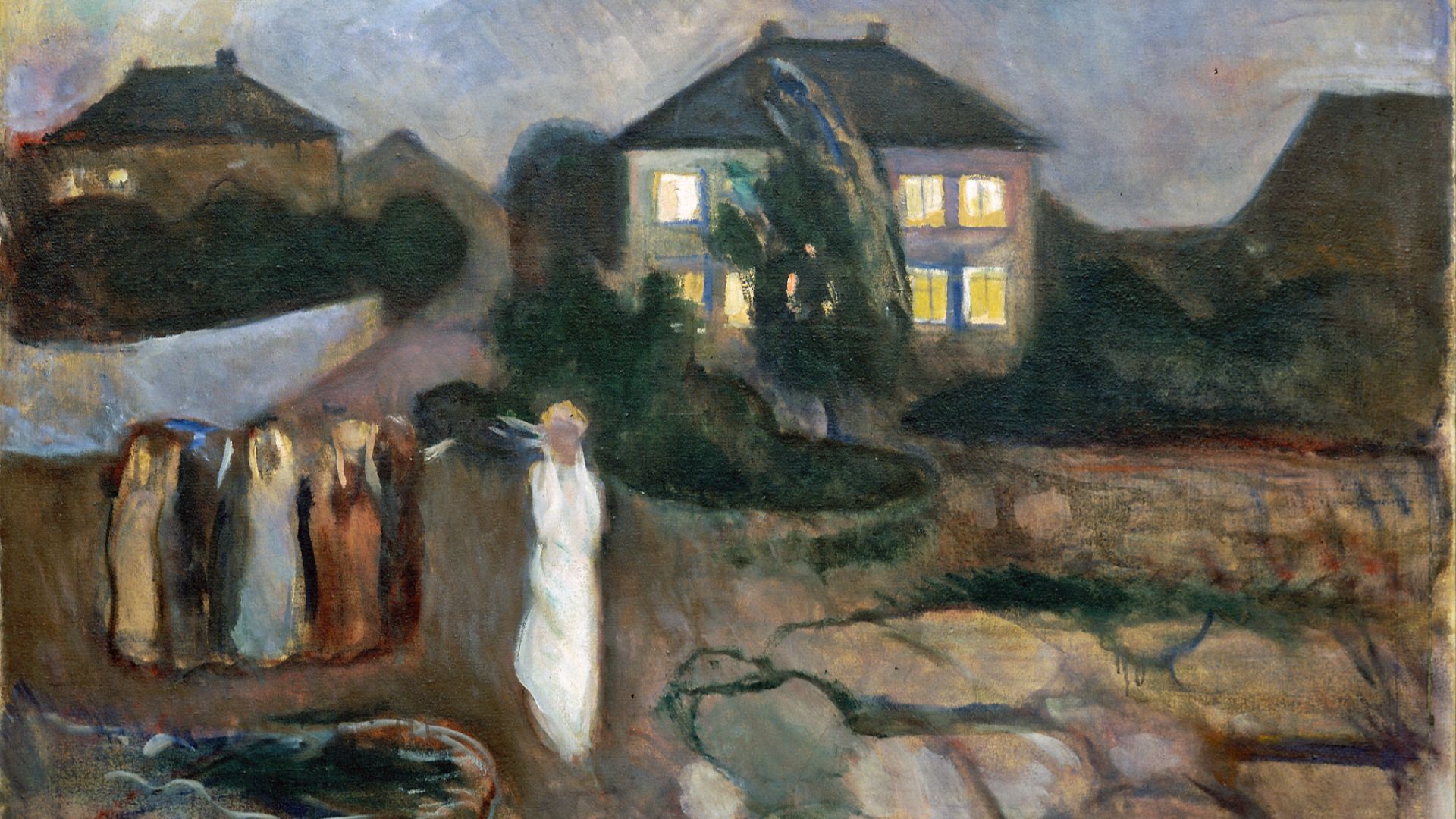 Edvard Munch, Wikimedia Commons
Edvard Munch, Wikimedia Commons
"The Yellow Log" (1912)
This piece showcases Munch’s fascination with the natural world. The bright yellow tree trunk lies diagonally across a forest scene, and the bold colors and dynamic composition reflect his evolving style in the early 20th century. This was around the time he began to move toward more expressive scenery.
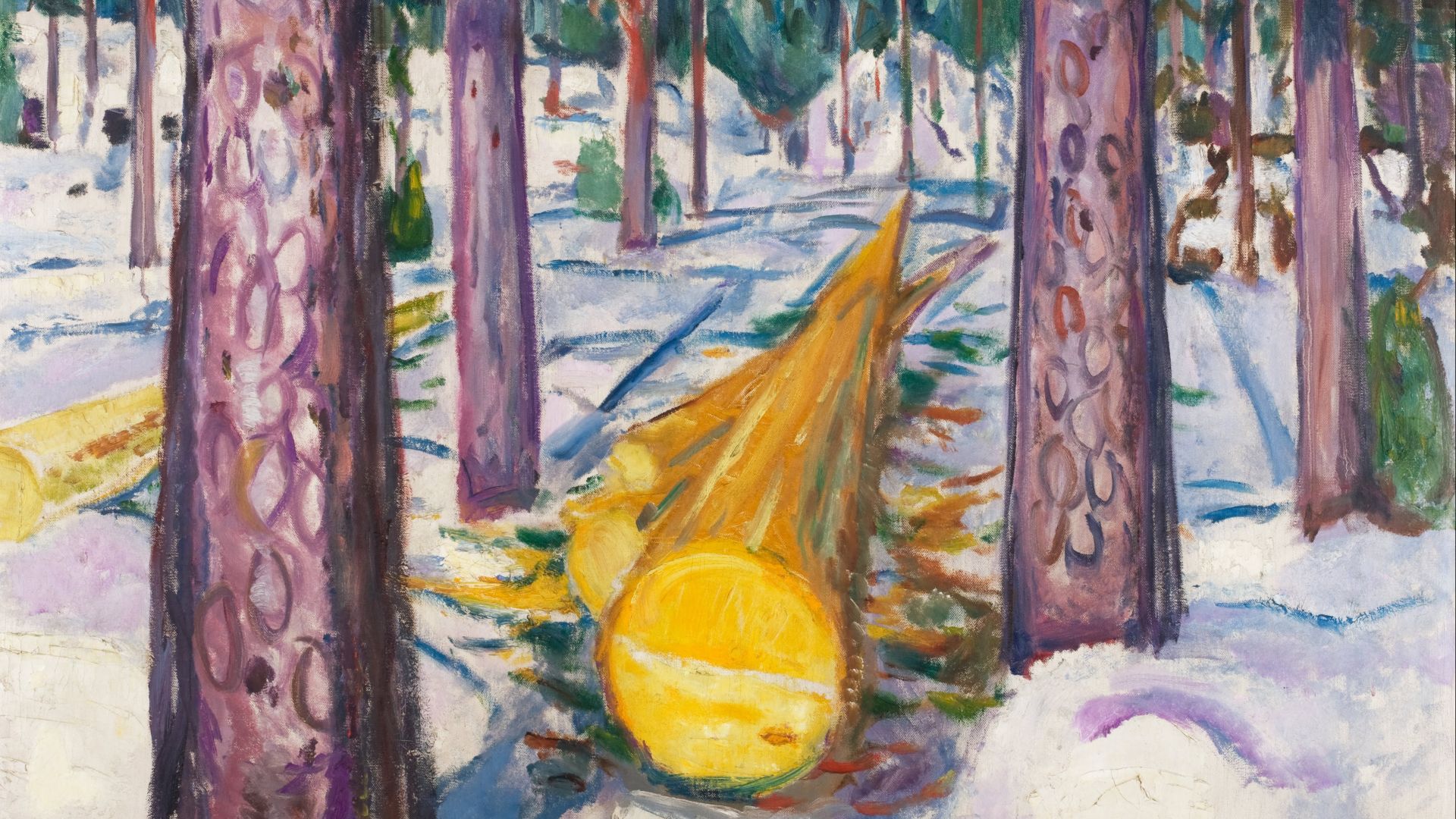 Edvard Munch, Wikimedia Commons
Edvard Munch, Wikimedia Commons
“Death In The Sickroom” (1895)
Grief returns in this solemn scene depicting the aftermath of loss. Years after his sister’s passing, Munch revisits her passing, painting a room heavy with sorrow. Every shadow speaks of mourning, and this work invites you to step inside and feel the quiet weight of death’s finality.
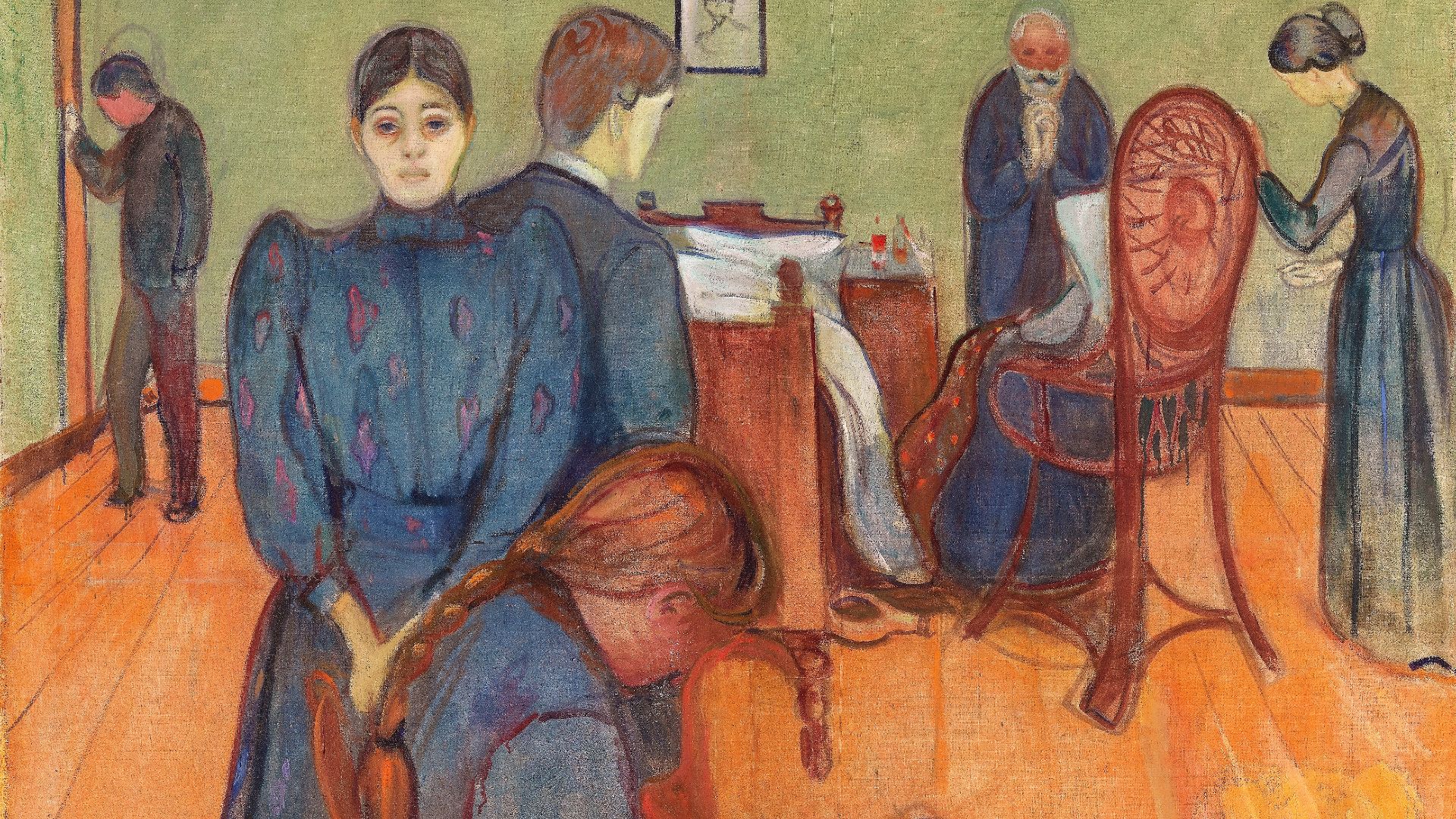 Edvard Munch, Wikimedia Commons
Edvard Munch, Wikimedia Commons
“The Brooch Eva Mudocci” (1903)
Portraiture meets mystery in this elegant depiction of Eva Mudocci, a violinist and Munch’s muse. The subtle convergence near her heart suggests that all secrets and joys lie beneath a calm exterior. This pulls you to ponder the hidden stories behind poised appearances.
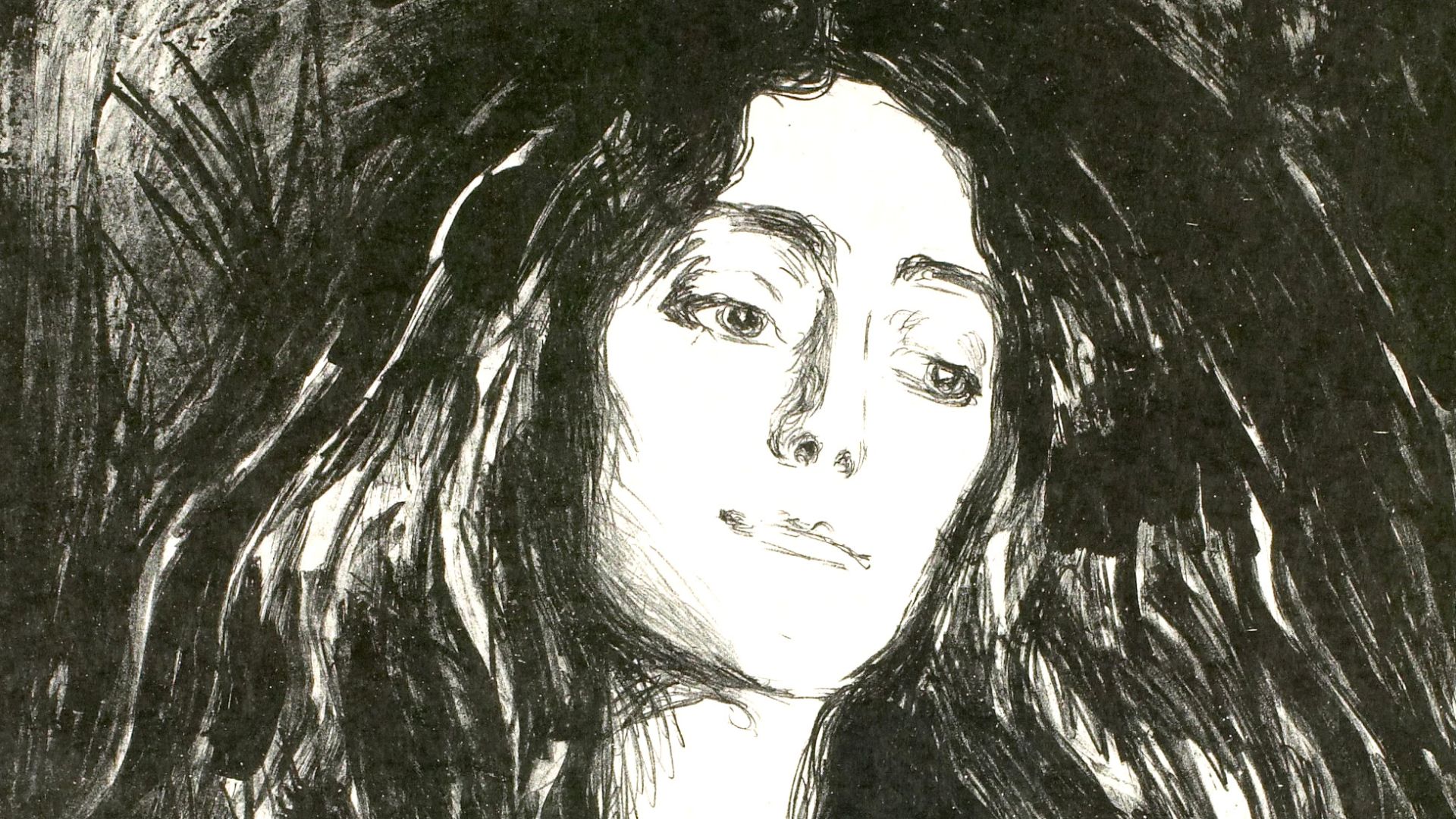 Edvard Munch, Wikimedia Commons
Edvard Munch, Wikimedia Commons
“Workers On Their Way Home” (1913–1914)
Munch’s social conscience shines in this work, where he captures weary laborers trudging home. The painting’s somber tones and tired figures highlight the era’s class struggles. It’s a reminder to you of art’s power to humanize society’s often invisible hands.
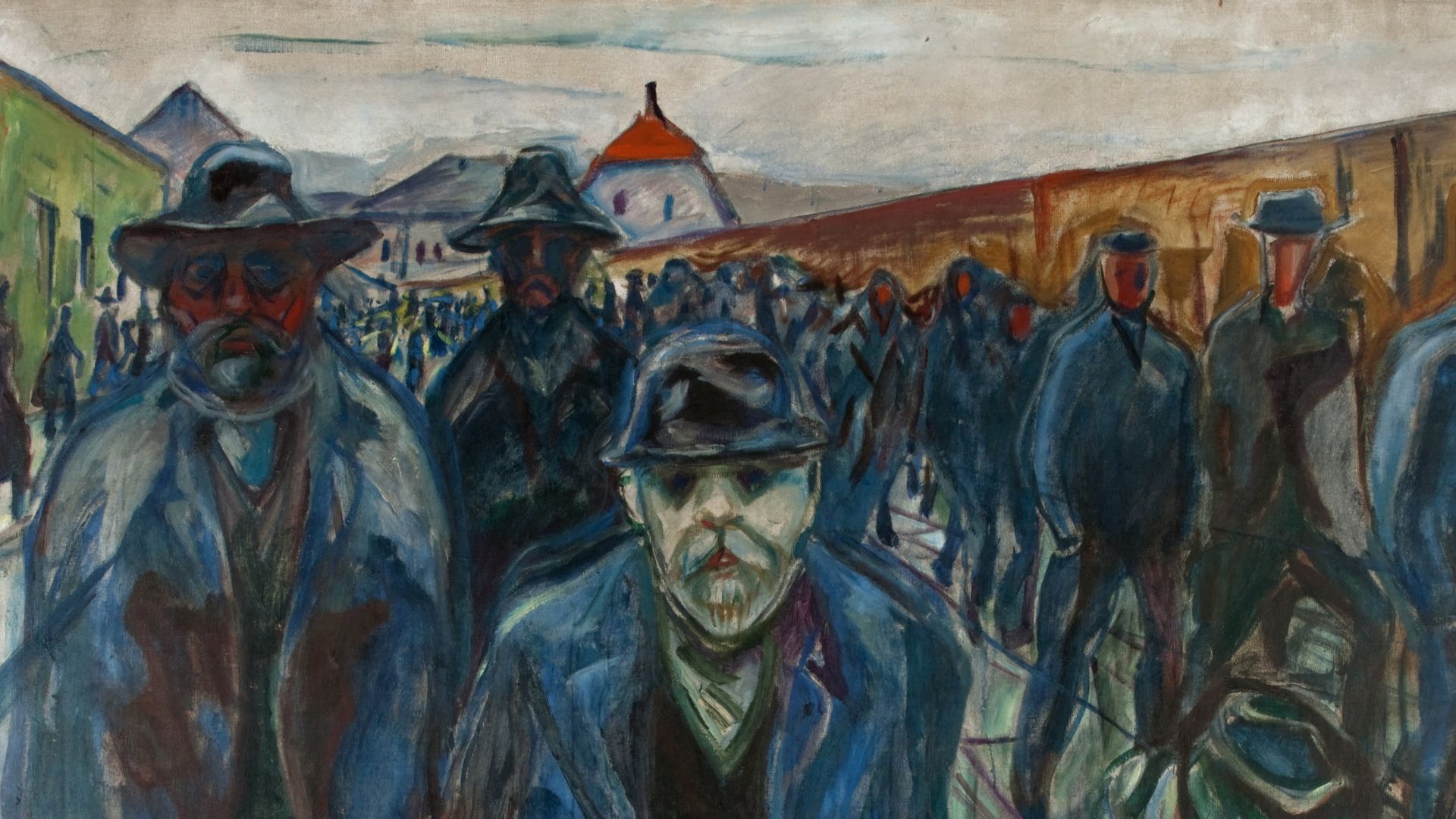 Edvard Munch, Wikimedia Commons
Edvard Munch, Wikimedia Commons
“Starry Night” (1922–1924)
Dreamlike and contemplative, this piece displays Munch’s evolving style. The star-speckled sky swirls with both beauty and melancholy. “Starry Night” invites you to lose yourself in the cosmos. It’s as if Munch whispers: “Even in darkness, wonder remains”.
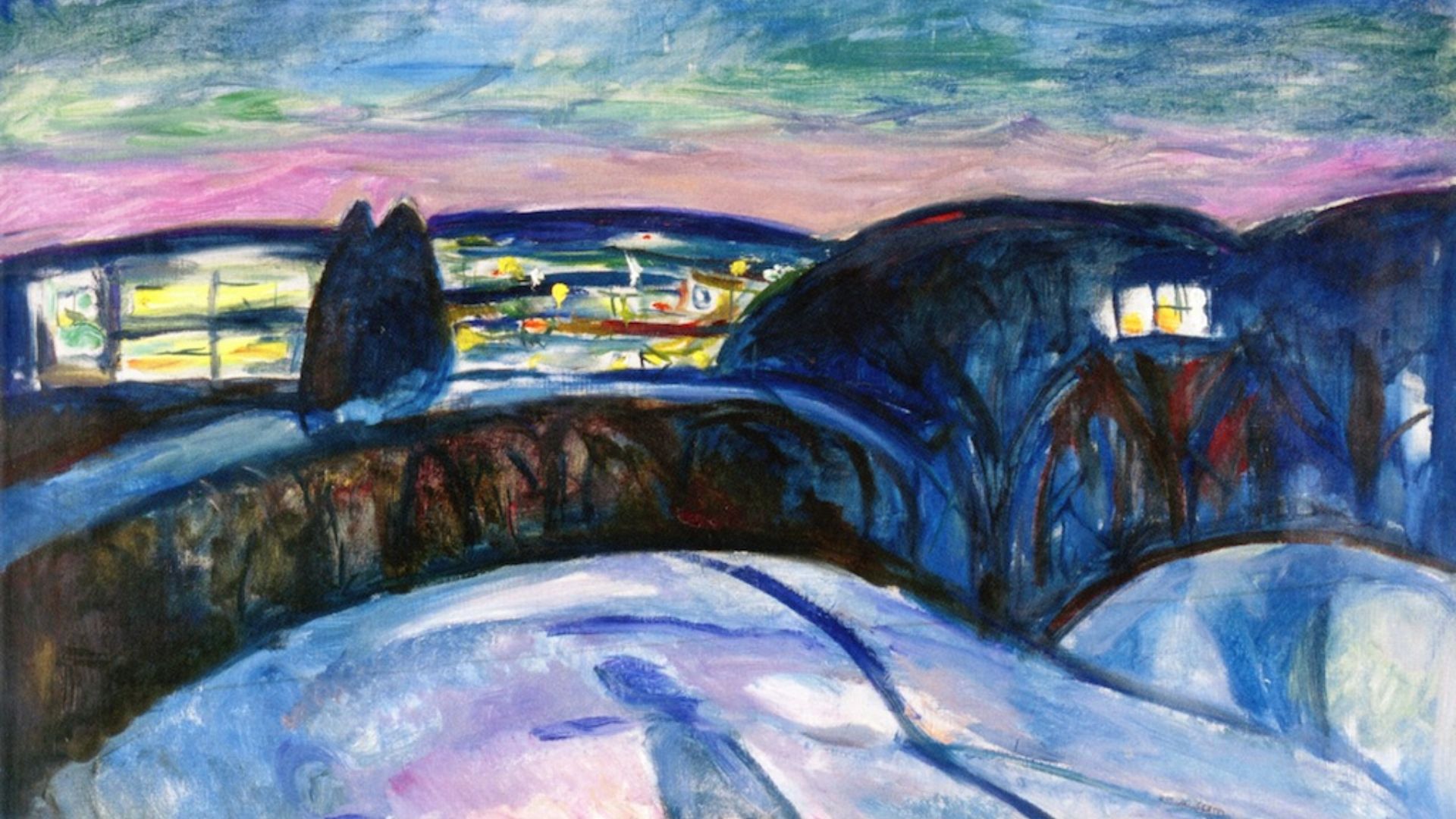 Edvard Munch, Wikimedia Commons
Edvard Munch, Wikimedia Commons
“The Murderer” (1910)
This is the kind of painting that dares you to explore darker impulses lurking beneath the surface of the human mind. Psychological tension boils over here as Munch confronts themes of crime and guilt. The shadowy figure and stark contrasts evoke a sense of fear and menace.
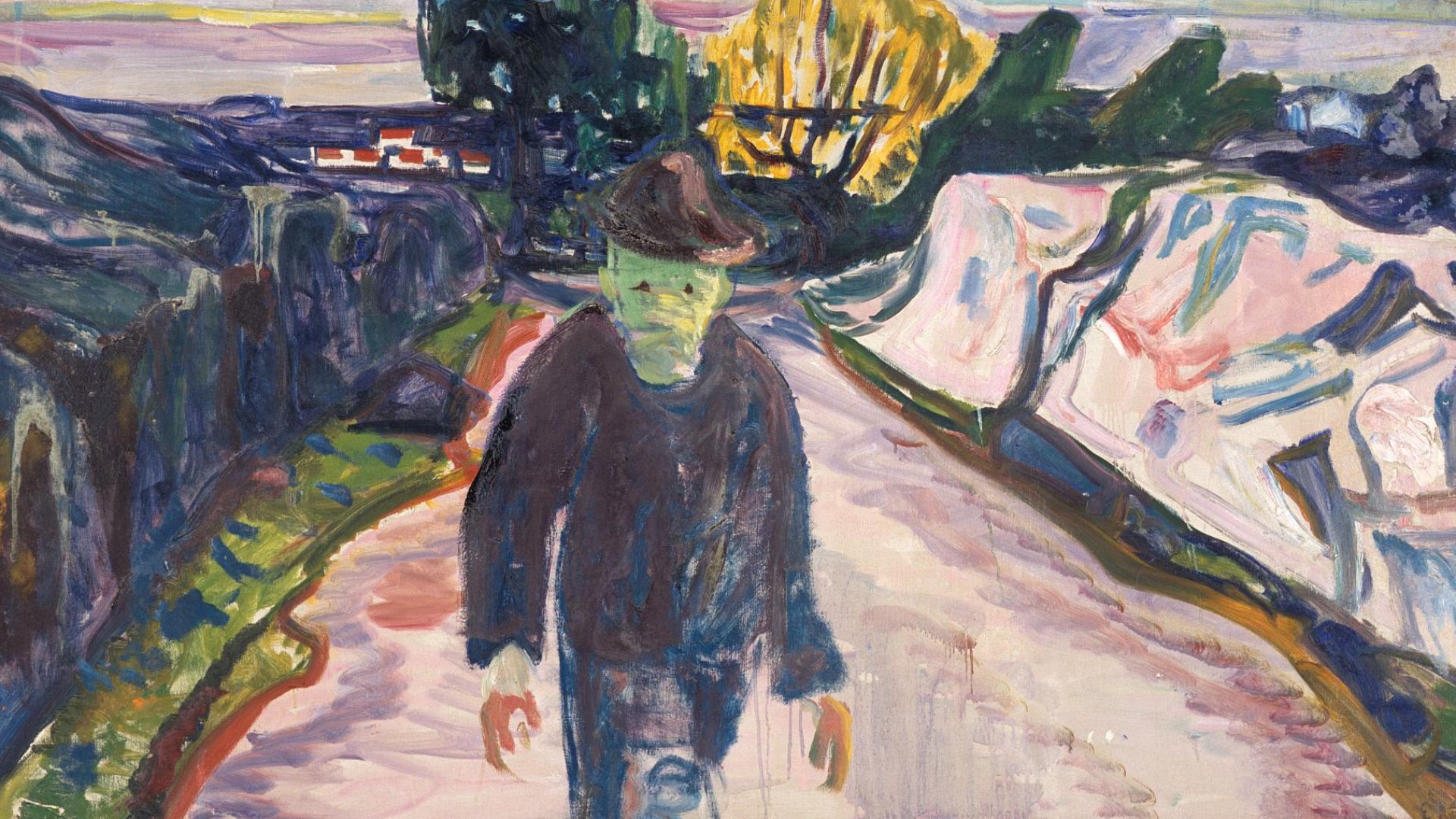 Edvard Munch, Wikimedia Commons
Edvard Munch, Wikimedia Commons
“The Kiss” (1897)
Passion burns fiercely in this intimate portrayal of lovers merged as one. In this frame, the artist seizes the intense emotions and fleeting moments of romance, wrapping you in the embrace’s warmth and tension. Peek how the faces disappear—love sometimes means losing yourself in another.
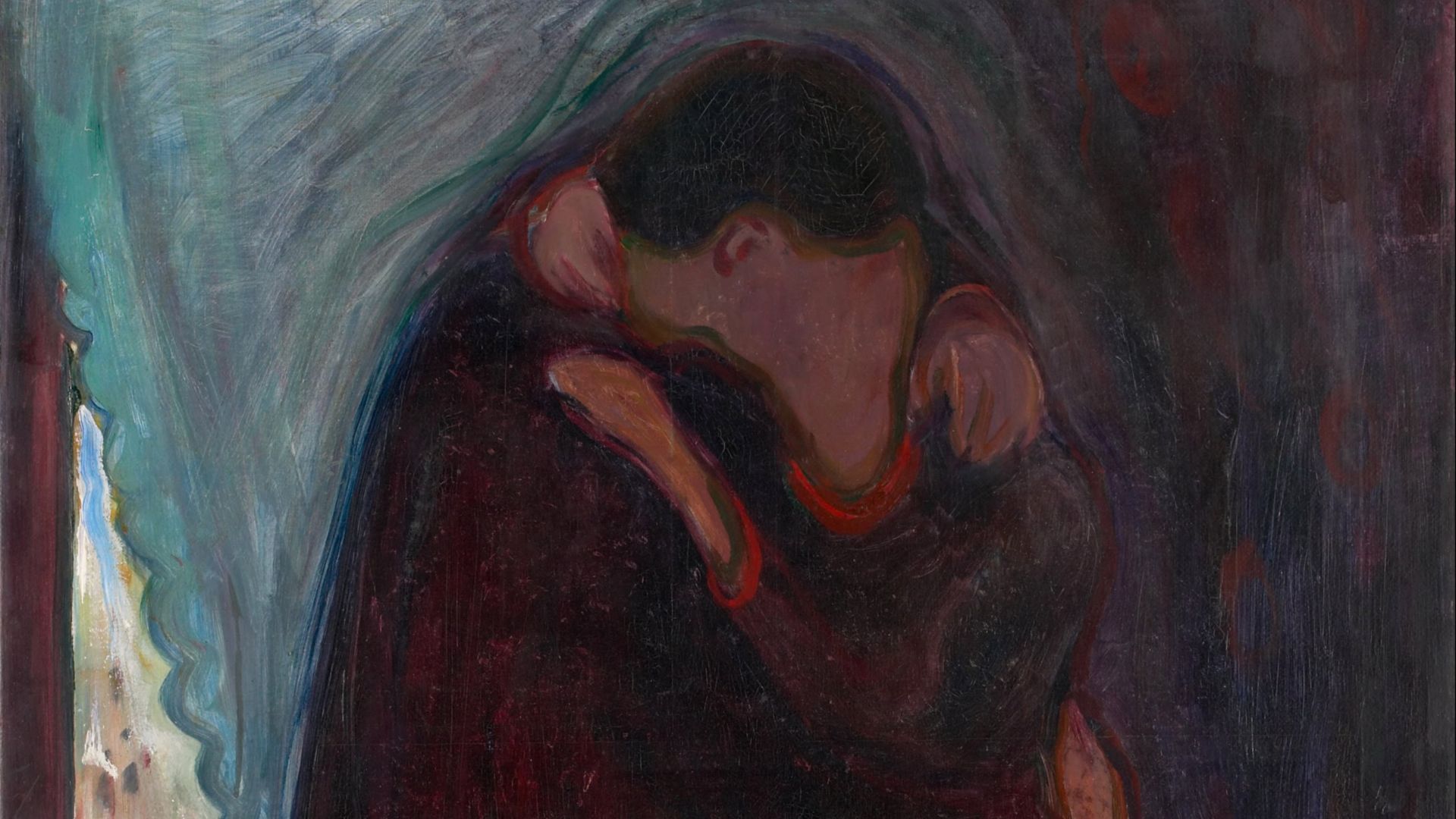 Edvard Munch, Wikimedia Commons
Edvard Munch, Wikimedia Commons
“Anxiety” (1894)
Feel the weight of dread pressing in with this haunting depiction of hollow-eyed figures. When he painted this one, he must have been confronting personal fears through unsettling imagery that reverberates with universal tension. This work asks: How often do your worries echo silently beneath your daily facade?
 Edvard Munch, Public domain, Wikimedia Commons
Edvard Munch, Public domain, Wikimedia Commons
“Separation” (1896)
Heartbreak paints a vivid scene showing two figures drifting apart amid swirling chaos. The masterful piece channels the pain of emotional rifts, inviting you to sense the raw loneliness that follows the collapse of love. Some wounds carve deeper than others.
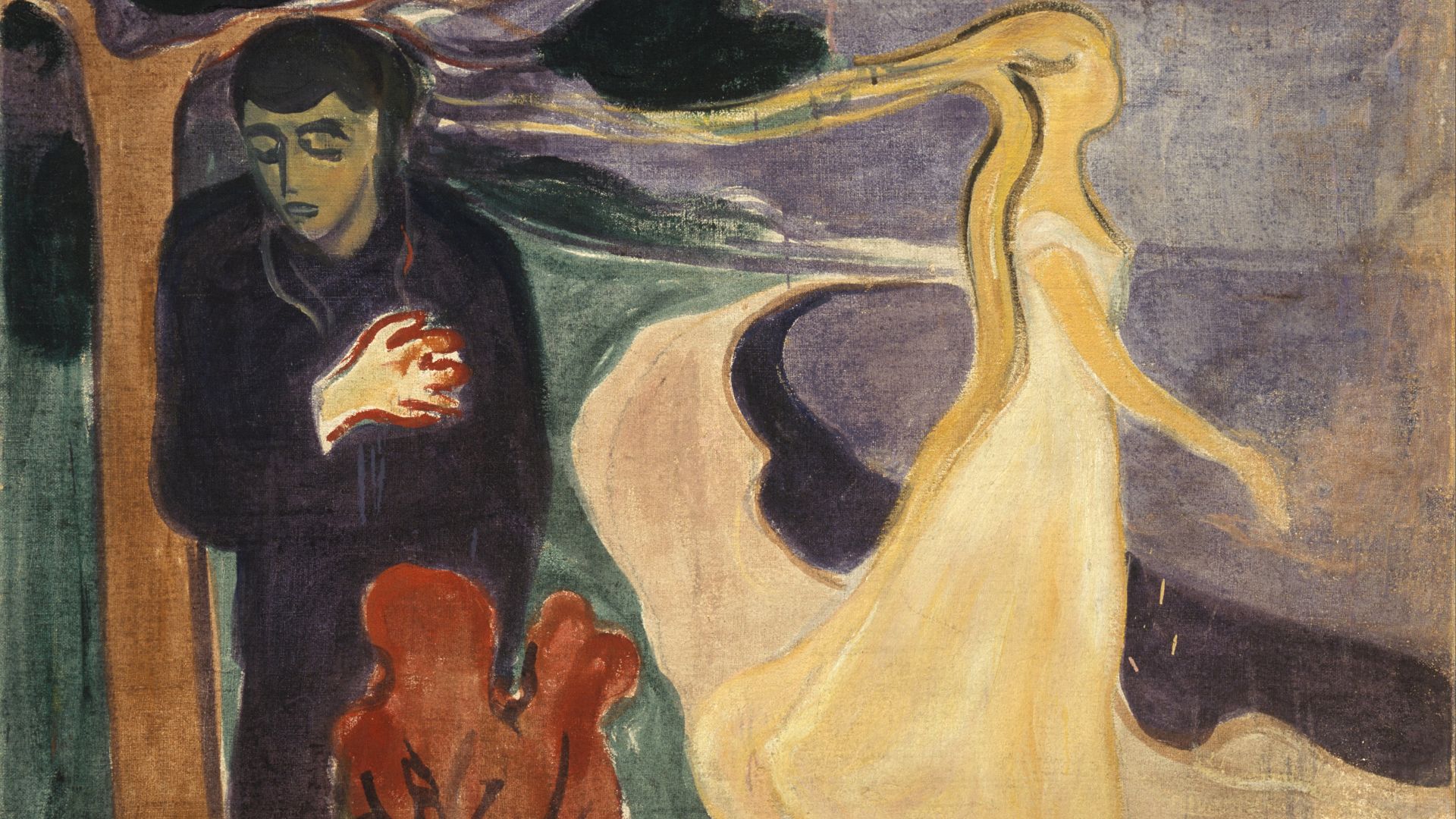 Edvard Munch, Wikimedia Commons
Edvard Munch, Wikimedia Commons
“The Weeping Woman” (1907–1909))
Sorrow seeps from every brushstroke of this portrayal created by Munch. The distorted face and trembling tears express profound emotional distress, such that it makes you pause and acknowledge the universal experience of grief. How often do you carry hidden sadness when no one is watching?
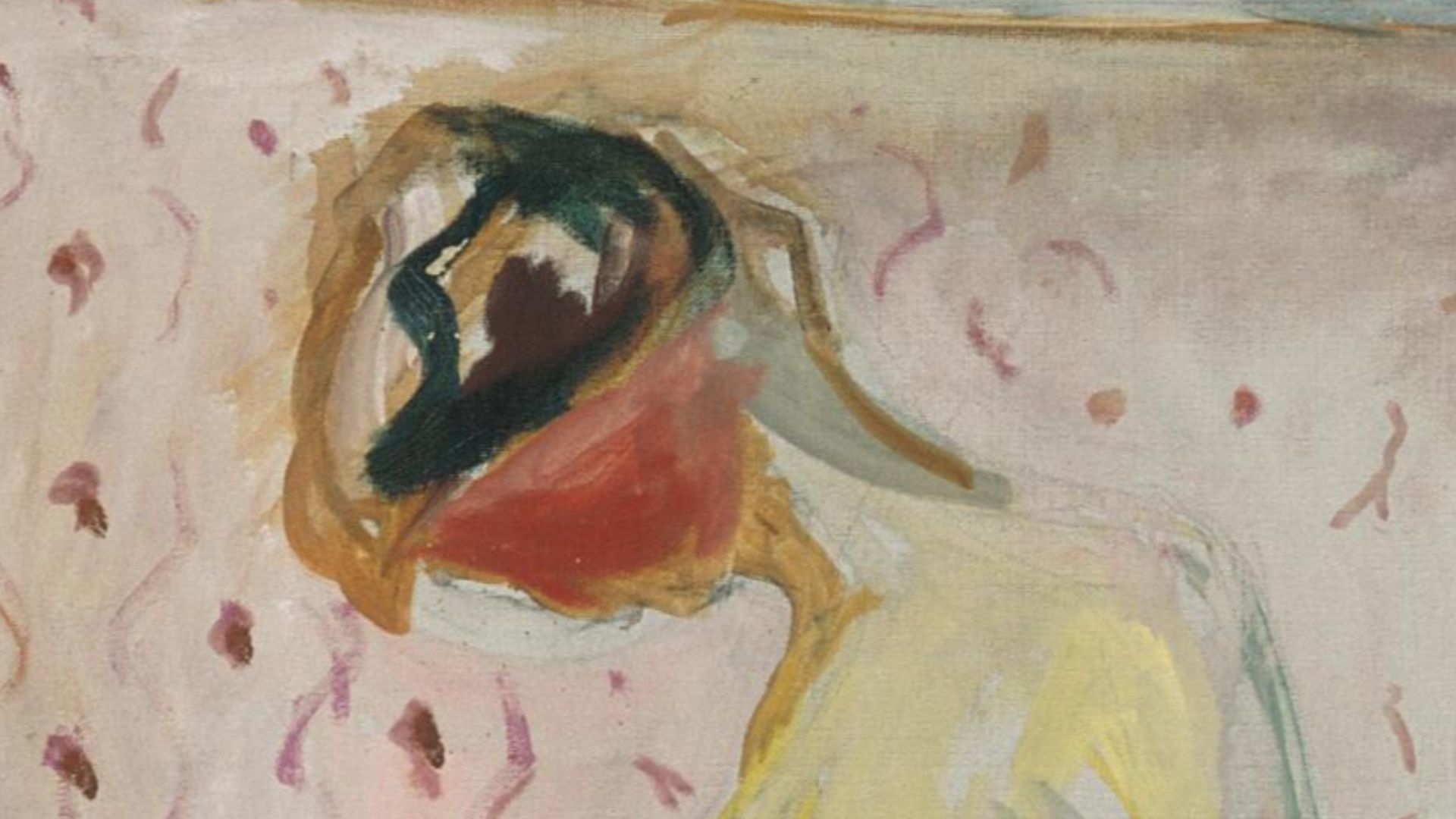 Edvard Munch, Wikimedia Commons
Edvard Munch, Wikimedia Commons
“The Seine At Saint-Cloud” (1890)
Calm and peaceful, this painting captures a tranquil moment by the Seine. There are soft reflections that ripple gently, offering a serene contrast to his darker works, which depict life going wrong. Find beauty in the quiet, everyday scenes around you.
 Edvard Munch, Wikimedia Commons
Edvard Munch, Wikimedia Commons

